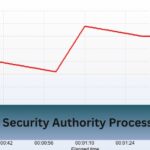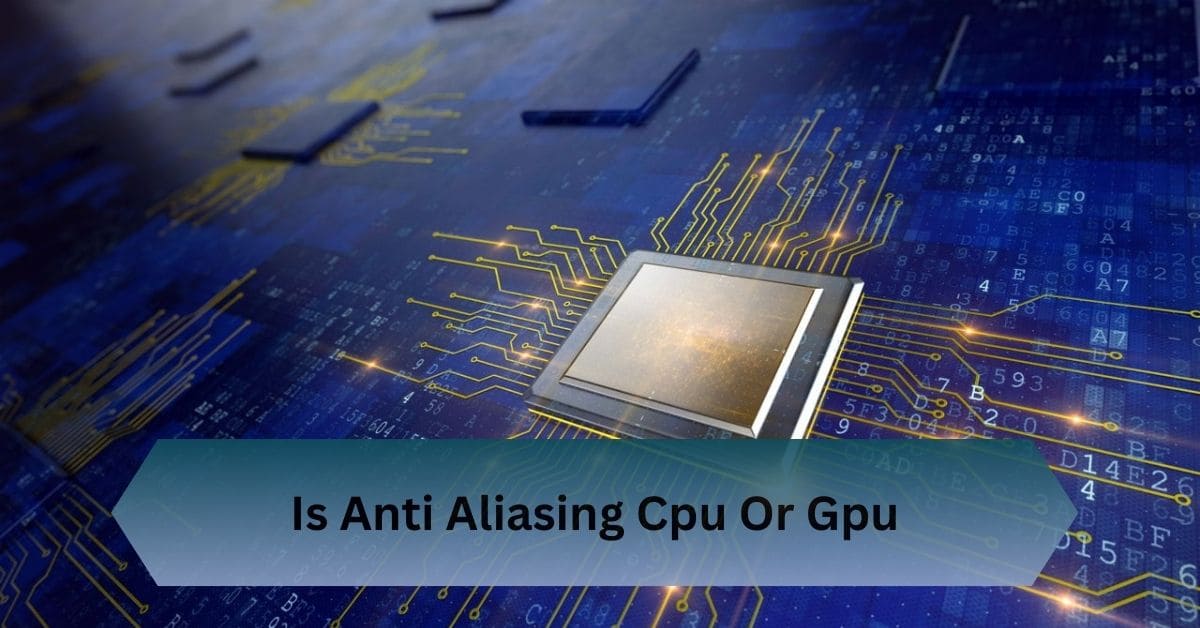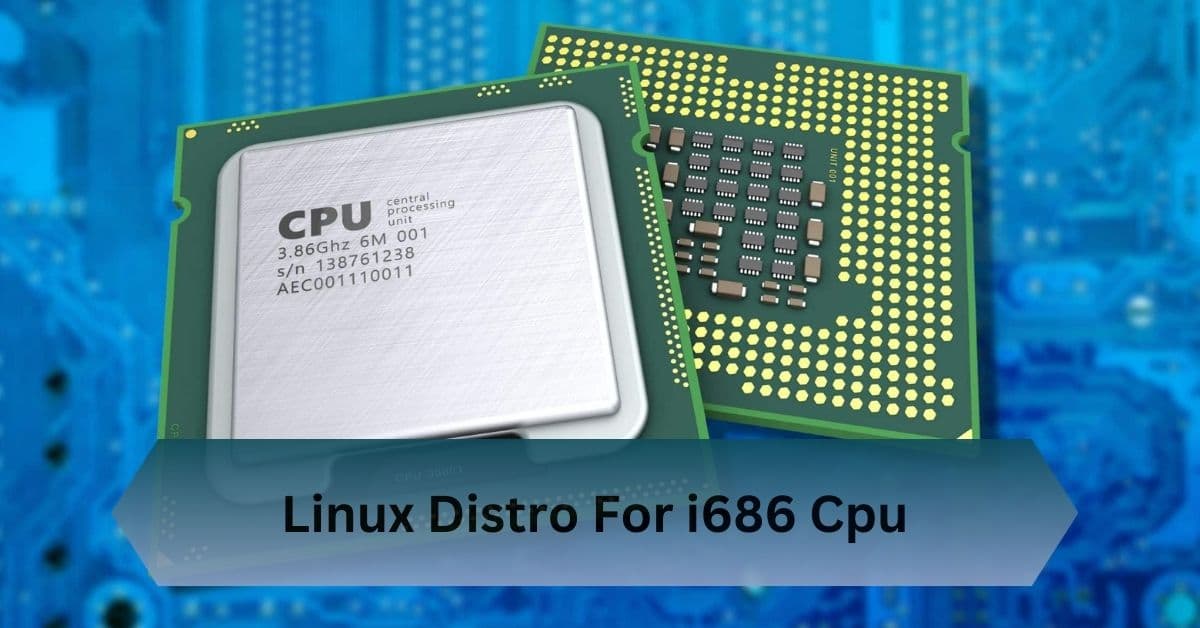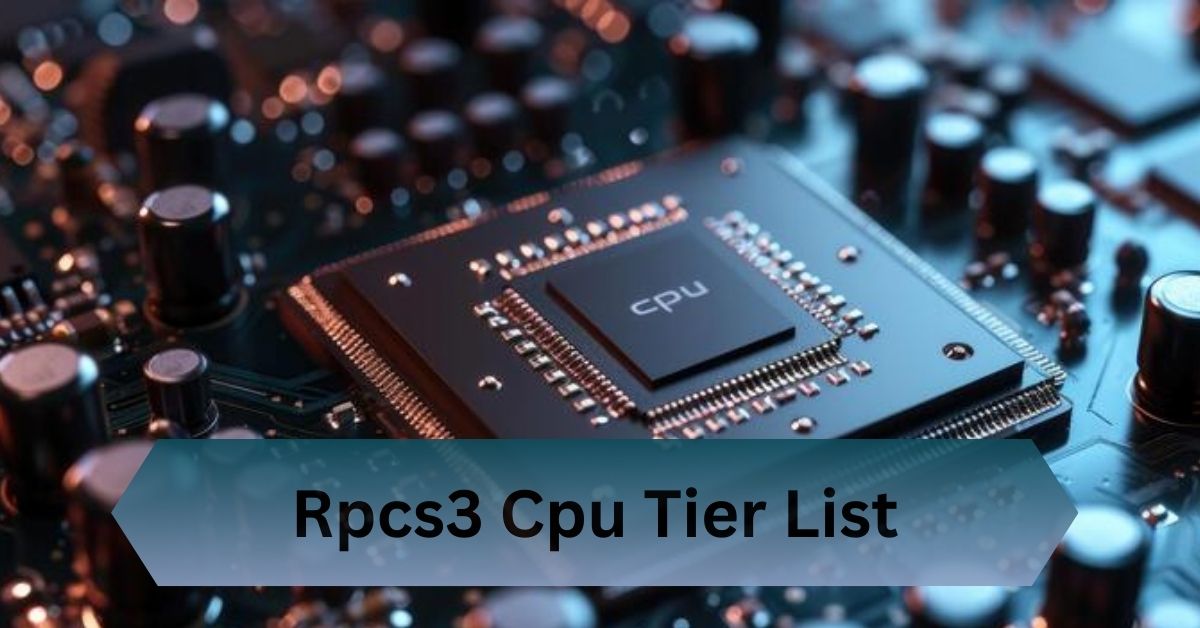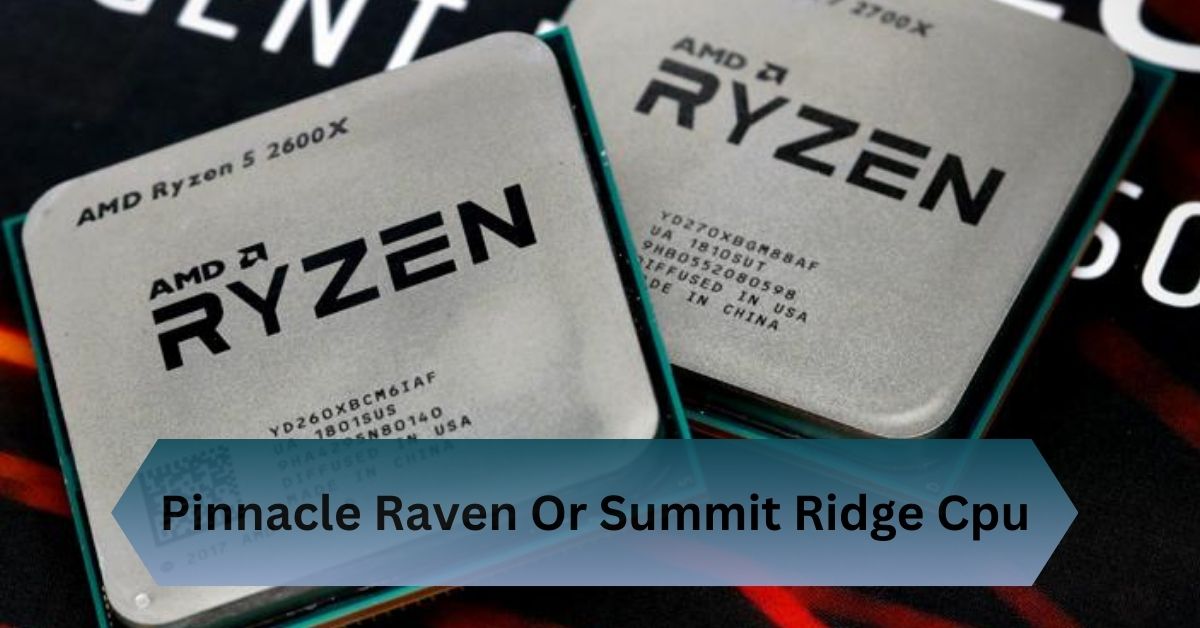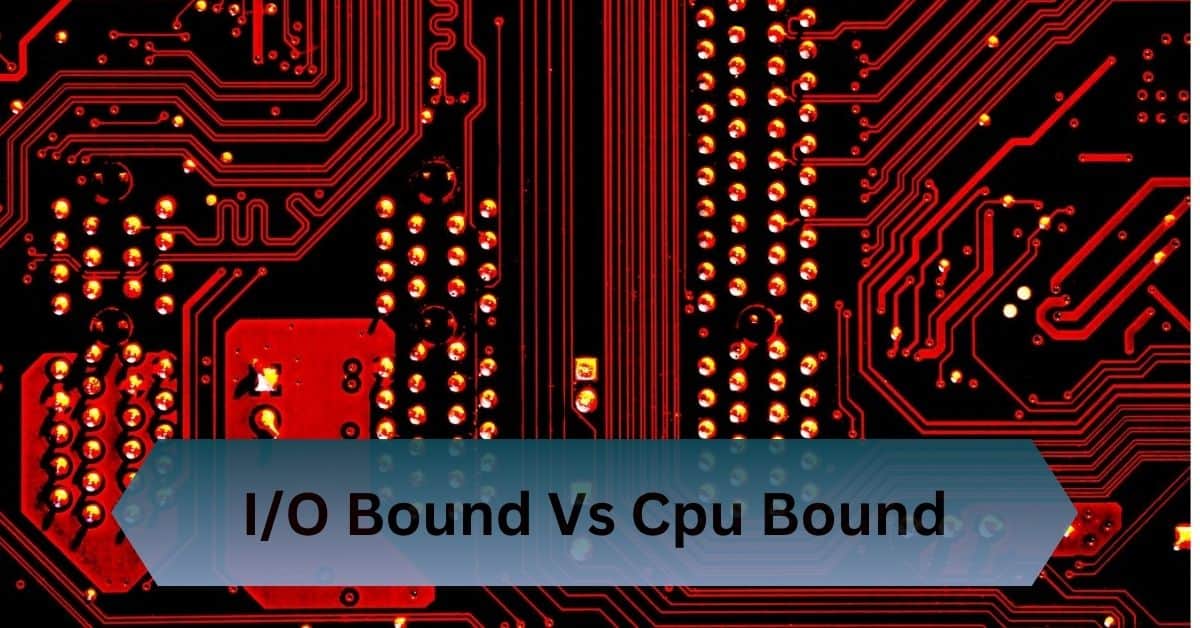In the world of computer graphics, one of the most noticeable visual issues is the appearance of jagged edges, often referred to as “aliasing.” These edges appear in images or videos when the resolution of the display or the graphics rendered on screen does not properly match the geometric curves or diagonal lines.
Anti-aliasing is primarily handled by the GPU, which excels in parallel processing to smooth jagged edges, while the CPU assists with general tasks.
Discover how the GPU powers anti-aliasing to create smooth, stunning visuals, leaving the CPU to handle the rest—learn more about this essential graphic tech!
Table of Contents
What Is Anti-Aliasing?
Anti-aliasing is a technique used in digital imaging to reduce the appearance of jagged edges in images, especially when depicting diagonal lines or curves.
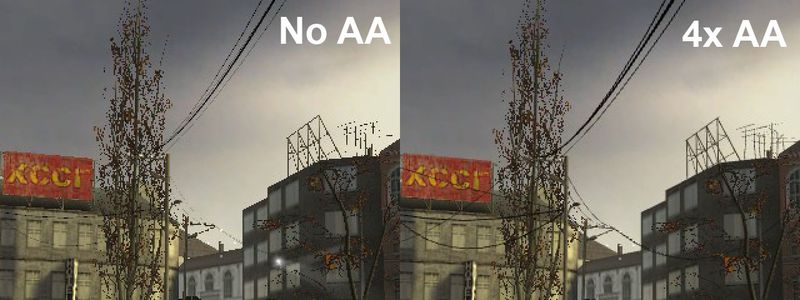
These jagged edges, commonly known as “jaggies,” appear because digital displays render images as a grid of square pixels.
When diagonal lines or curves are displayed, they often create a “staircase” effect due to the inability of square pixels to perfectly represent these shapes.
Understanding Anti-Aliasing
The Concept of Aliasing:
Aliasing happens when a low-resolution image struggles to represent smooth edges, making them look pixelated or jagged. It’s especially noticeable in games and digital art.
How Anti-Aliasing Works:
Anti-aliasing techniques smooth these jagged edges by blending pixels around the edges or increasing resolution temporarily. This process enhances visual quality, creating a more immersive experience.
Read Also: Env Node Bad Cpu Type In Executable – How To Fix!
Types of Anti-Aliasing Techniques
Post-Processing Anti-Aliasing:
- FXAA (Fast Approximate Anti-Aliasing): Lightweight and fast but can blur textures.
- SMAA (Subpixel Morphological Anti-Aliasing): Better quality than FXAA, with minimal performance impact.
Supersampling Anti-Aliasing (SSAA):
This method renders the image at a higher resolution and then downsamples it, delivering stunning visuals but demanding significant GPU power.
Multisampling Anti-Aliasing (MSAA):
A popular choice in gaming, MSAA balances performance and quality, focusing on edge smoothing while leaving textures untouched.
Temporal Anti-Aliasing (TAA):
TAA smooths edges using frame-to-frame data, but it can introduce motion blur and ghosting.
CPU vs. GPU in Anti-Aliasing
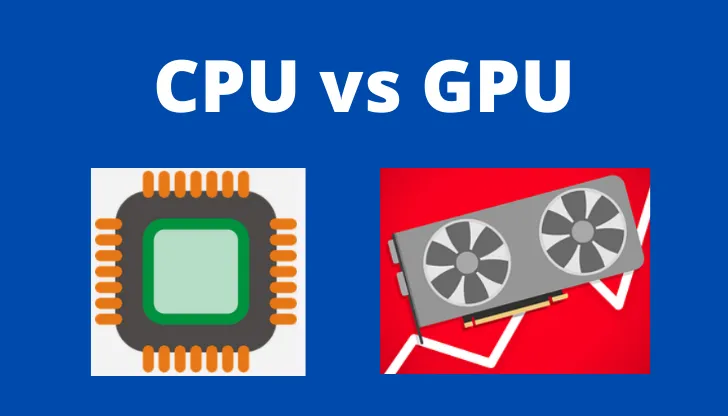
Role of the GPU:
Anti-aliasing is predominantly handled by the GPU since it’s responsible for rendering graphics. GPUs are optimized for high-speed parallel processing, making them ideal for applying complex anti-aliasing algorithms.
Role of the CPU:
While the GPU does the heavy lifting, the CPU plays a supporting role. It ensures that data flows efficiently between the game engine and the GPU. However, the CPU’s involvement in anti-aliasing is minimal.
Does Anti-Aliasing Impact CPU Performance?
Typically, anti-aliasing does not significantly strain the CPU. However, in systems with integrated graphics or older GPUs, the CPU might compensate, which could lead to performance drops.
How Anti-Aliasing Affects Frame Rates?
Anti-aliasing can reduce frame rates because it adds extra processing to smooth jagged edges in graphics. More demanding techniques like Supersampling (SSAA) can cause a significant drop in frame rates, especially on lower-end systems.
However, lighter methods like FXAA have minimal impact on performance but might sacrifice some visual quality. High-end GPUs can handle more complex anti-aliasing methods like MSAA or TAA with less noticeable frame rate drops, though some reduction is still possible in demanding scenes.
Read Also: 48 Pcie Lanes Cpu – Unmatched Connectivity And Performance!
Choosing the Right Anti-Aliasing for Your Hardware
- Low-End GPUs: Opt for FXAA or SMAA for minimal performance impact.
- High-End GPUs: TAA or MSAA can deliver better visuals without a noticeable drop in frame rates.
Anti-Aliasing in Modern Gaming
- Integration in Game Engines: Modern game engines like Unreal Engine and Unity offer advanced anti-aliasing options, allowing developers to choose the best method for their game’s visual style and performance requirements.
- Enhanced Visuals: Anti-aliasing techniques like TAA and MSAA are widely used in modern games to improve image quality by reducing jagged edges, especially in visually demanding titles.
- Performance Optimization: Game developers often integrate performance-saving methods, such as FXAA or SMAA, to maintain smooth gameplay while still offering enhanced visuals.
- Anti-Aliasing in VR: In virtual reality, anti-aliasing helps eliminate jagged edges, which can disrupt immersion, though it requires powerful hardware to avoid performance drops.
- 4K Gaming: With the rise of 4K gaming, anti-aliasing plays a crucial role in smoothing out edges without sacrificing too much performance, as higher resolution naturally reduces aliasing.
How Anti-Aliasing Affects Performance?
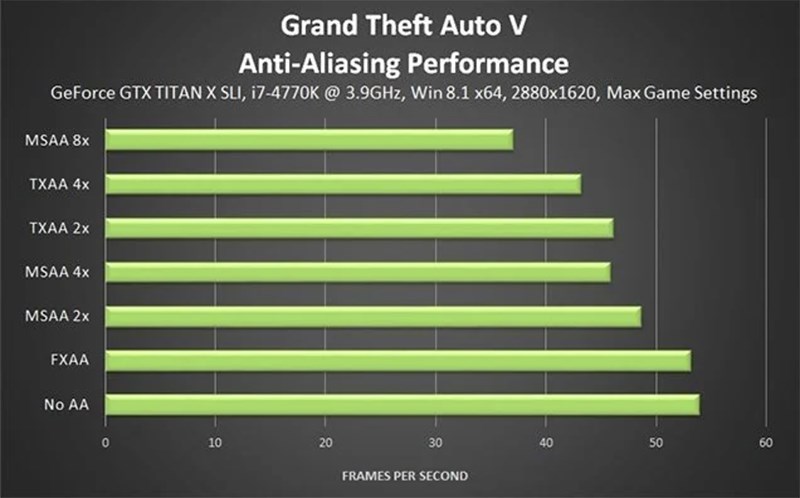
Frame Rate Impact:
Methods like SSAA (Super Sampling Anti-Aliasing) and MSAA can significantly reduce frame rates since they require extra rendering passes and higher computational power. This is why many gamers opt for FXAA or TAA (Temporal Anti-Aliasing), which are less taxing on performance.
GPU Load:
The more intensive the anti-aliasing method, the greater the load placed on the GPU. For example, 4x MSAA may not be as taxing as 8x MSAA or SSAA, but all of these methods will require the GPU to work harder.
Real-Time Rendering Demands:
In real-time applications like gaming, the GPU must maintain high frame rates while also applying anti-aliasing techniques. Modern GPUs are capable of handling this challenge with ease, but older or lower-end GPUs may struggle, resulting in frame rate drops or stuttering.
Frequently Asked Questions:
1. Is texture quality GPU or CPU?
Texture quality is primarily handled by the GPU, as it is responsible for rendering and applying textures to 3D models. The CPU assists with loading and managing textures, but the GPU does the heavy lifting in processing them.
2. Is Shadow Quality GPU or CPU?
Shadow quality is primarily managed by the GPU, as it handles the rendering and processing of shadows in real-time. The CPU supports by calculating the scene and object positions but doesn’t handle the actual shadow rendering.
3. Is post processing CPU or GPU?
Post-processing effects are primarily handled by the GPU, as it processes the final image to apply effects like bloom, motion blur, and depth of field. The CPU’s role is minimal, mainly handling game logic and asset management.
4. Can anti-aliasing be turned off in games?
Yes, most games offer an option to turn off anti-aliasing in the graphics settings, which may improve performance at the cost of visual quality.
Conclusion:
The GPU primarily handles anti-aliasing, using its parallel processing power to smooth jagged edges, while the CPU supports general tasks and game logic.
Read Also:
